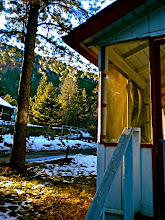Ages 16-18

Jena is a bubbly, curvy, effusive girl who collects quotations and desperately hopes that she will find a guy that likes her despite what she sees as her physical imperfections.
Dakota is a jock. On the baseball team and the wrestling squad, this gorgeous teen can do no wrong. But he can’t seem to get along with either of his divorced parents or his nerdy little brother. Dakota has suffered an intense personal loss, and the way he responds to his grief can be destructive to those around him.
Skye is a stunning half Brazilian, half Caucasian actress who seems to have it all. But now all the things that once were important to her no longer matter. She is hiding something ugly beneath her beautiful exterior.
Owen is a shy computer geek—much more at home composing entries for his blog, “Loser With a Laptop,” than interacting with other people. Plus his overprotective mother can’t seem to let go.
Jena, Dakota, Skye, and Owen seem to have nothing in common, except for the fact that they are all trapped together in Paradise, a five-star resort in the Caribbean. Their interaction on the island sets forth a chain of events that forces the teens into self-examination and leaves none of them unchanged. Told from the point of view of each of the four characters, Mackler’s insightful novel is thought provoking and well written and presents an honest account of what it’s like to be a teenager today.
Discussion points: suicide, relationships, Internet relationships vs. “real” relationships, body image, sex
Caveats: semi-explicit sex scenes, bad language
Discussion questions to get you started:
1. In Jena’s story, we get a distinct idea of what kind of people Skye and Dakota are. How does this picture change once we hear their sides of the story? How does it stay the same? Are Dakota and Skye more sympathetic or less sympathetic characters once you hear the story from their point of view?
2. Jena expresses a negative body image and she is self-conscious about her personality. How is this different from the way the other three characters see her? What does this say about how we might see ourselves as opposed to the way others see us?
3. Owen’s mother wishes him to experience the “real world” as opposed to a virtual world of blogging and Internet relationships. Does she have a valid concern? Is there a difference between online friendships and real-life friendships? Is one better than the other?
4. Skye seems to have it all: looks, an awesome career, money. But she’s not happy. What does that say about what makes us happy in this world?
5. This story is written from the point of view of all four characters. Why might the author have made that choice? What do you think are some of the benefits of this format? Some of the weaknesses?
If you liked this book you might enjoy: Twisted by Laurie Halse Anderson, The Sisterhood of the Traveling Pants by Anne Brashares, Deadline by Chris Crutcher, Just Listen by Sarah Dessen, Someone Like You by Sarah Dessen, The Earth, My Butt, and Other Big Round Things by Carolyn Mackler, Dairy Queen by Catherine Gilbert Murdock
